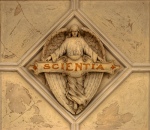These ants possess obvious evolutionary adaptations to aid their gliding behavior. Namely, the top of their head is flattened in order to generate lift as they fall upside down. In addition, the terminal segment of their hind legs is elongated and flattened (see photo below). In order to determine the importance of these specialized leg structures in generating lift and steering during descent, researchers preformed a series of experiments on the ants. They excised various body parts and then dropped the ants from the forest canopy, recording their success in gliding back to a tree.

Left: Tarsal segment of C. atratus leg viewed from the top and the side showing flattened surface. Right: Percent success of gliding back to a tree from dropped ants with various excised body parts. Adapted from Yanoviak et al., 2010.
The first thing you should note from this experiment is how damn good these ants are at gliding back to a tree when they are dropped. The unmolested control ants on the right make it to a tree over 90% of the time. However, the researchers found that if the hind legs are removed, gliding success drops to 40%, making the hind legs the most crucial appendages for steering while gliding. Also, despite the removal of a single hind leg, the other legs, or the gaster, the ants still did a pretty decent job of getting back to a tree. This success in the face of adversity suggests that steering control is highly flexible and adaptable in these worker ants. Therefore, even if a limb is lost to a predator, they are still able to glide to safety.
This research sheds light onto the complex bio-mechanics of gliding ants. They are required to preform a tightly controlled set of maneuvers as they fall in order to generate directional gliding forces. This research has shown that several structural adaptations cooperatively assist in these maneuvers.
In addition, the study of arboreal ant gliding behavior may provide clued about the origins of insect flight. Though ants are highly derived, previous fossil evidence has shown that early hexapods may have glided before developing wings. Similar gliding phases are also hypothesized in the evolutionary history of winged vertebrates. Therefore, continued research into the aerodynamic forces at work in gliding ants may suggest clues regarding the necessary stepping stones in gradual evolution of animal flight.
More on gliding ants:
- Article about this research in The Guardian, here.
- Photographing gliding ants mid fall, at Myrmecos.
- The origin of insect wings, at Catalogue of Organisms
References:
- Yanoviak SP, Munk Y, Kaspari M, & Dudley R (2010). Aerial manoeuvrability in wingless gliding ants (Cephalotes atratus). Proceedings. Biological sciences / The Royal Society PMID: 20236974

















